RAINPLUS®, HOW DOES IT WORK?
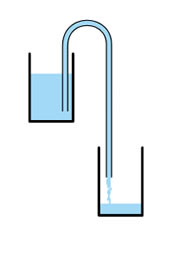 Rainplus® is defined as a siphonic rainwater drainage system because it is based on the same principle as a siphon. The siphon is in general a reversed U shaped pipe used to pour a fluid from one container to another located in a lower position. When the pipe is full, the fluid contained in the longer stretch of pipe tends to fall due to its weight causing the suction of the liquid in the shorter section, which is lighter in weight.
Rainplus® is defined as a siphonic rainwater drainage system because it is based on the same principle as a siphon. The siphon is in general a reversed U shaped pipe used to pour a fluid from one container to another located in a lower position. When the pipe is full, the fluid contained in the longer stretch of pipe tends to fall due to its weight causing the suction of the liquid in the shorter section, which is lighter in weight.
This process only starts when the pipe is completely full and continues until a balance between the two containers is reached: either when the two containers reach the same level or when the fluid level in the higher container goes below the pipe inlet section.
The driving force that causes this effect is a result of the difference in height of the two containers: the bigger the difference, the stronger the driving force and, as a consequence, the greater the flow speed in the pipe.
The performances of the Rainplus® siphonic drainage system are therefore decidedly better than those of a conventional system where the driving force is generated exclusively by the amount of water that accumulates on the roof. When the siphonic drainage system works at full capacity, the “siphon effect” is triggered resulting in a driving force that is proportionate to the height of the roof and the end of the circuit, which is typically located at ground level.
Such power generates levels of positive and negative pressures in specific points of the circuit in this way the speed and, as a consequence, the flow rates of the system (Bernoulli’s principle) are rapidly increased.
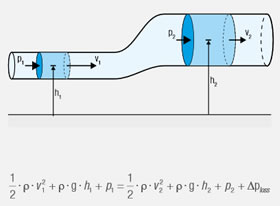
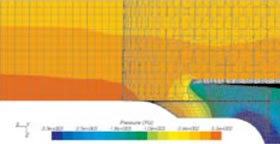


 Rainplus® is defined as a siphonic rainwater drainage system because it is based on the same principle as a siphon. The siphon is in general a reversed U shaped pipe used to pour a fluid from one container to another located in a lower position. When the pipe is full, the fluid contained in the longer stretch of pipe tends to fall due to its weight causing the suction of the liquid in the shorter section, which is lighter in weight.
Rainplus® is defined as a siphonic rainwater drainage system because it is based on the same principle as a siphon. The siphon is in general a reversed U shaped pipe used to pour a fluid from one container to another located in a lower position. When the pipe is full, the fluid contained in the longer stretch of pipe tends to fall due to its weight causing the suction of the liquid in the shorter section, which is lighter in weight.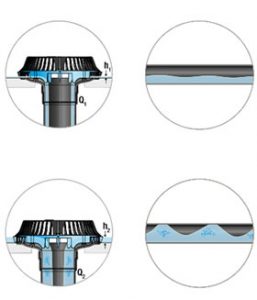 STAGE 1
STAGE 1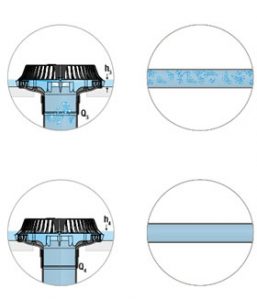 When the water discharged is between 60% and 95% of the design rainfall intensity value, the pipes are completely full of water, although many air bubbles are still present. This stage is called “bubble flow” and features high flow speed generated by the siphonic effect.
When the water discharged is between 60% and 95% of the design rainfall intensity value, the pipes are completely full of water, although many air bubbles are still present. This stage is called “bubble flow” and features high flow speed generated by the siphonic effect.